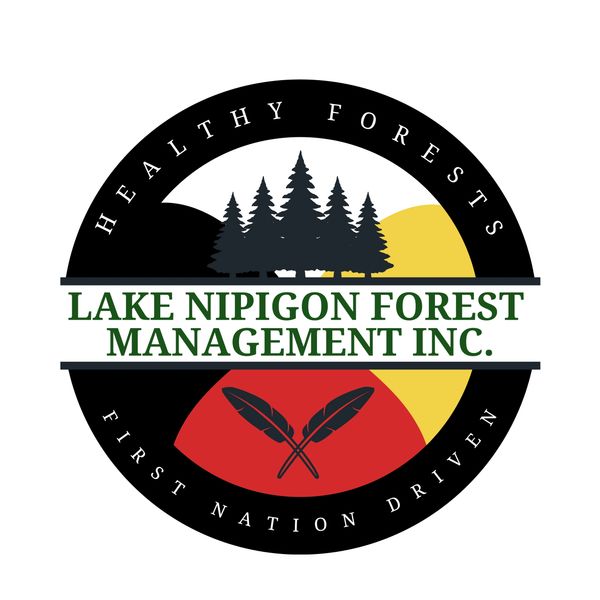 Earlier this year, British Columbia appointed a new deputy minister for the Ministry of Forests. Raised in the heart of the forestry sector, born into the family of a truck logger and growing up in a forestry camp, Makenzie Leine has been tasked with supporting a sector facing significant challenges. …Working with Minister of Forests Ravi Parmar and the ministry team to fulfill a mandate focused on both immediate, short-term improvements and long-term sustainability for the sector, there are a series of deliverables she is supporting. These include increasing value by supporting value-added and innovative forest products; diversifying wood products in domestic and international markets; bringing groups together in forest landscape planning tables to chart a path forward for the stewardship of BC’s forests and forest industry; improving permitting efficiency; and, working toward ensuring a sustainable land base to enable the harvest of 45 million cubic metres a year, while fulfilling the Province’s commitment to old growth.
Earlier this year, British Columbia appointed a new deputy minister for the Ministry of Forests. Raised in the heart of the forestry sector, born into the family of a truck logger and growing up in a forestry camp, Makenzie Leine has been tasked with supporting a sector facing significant challenges. …Working with Minister of Forests Ravi Parmar and the ministry team to fulfill a mandate focused on both immediate, short-term improvements and long-term sustainability for the sector, there are a series of deliverables she is supporting. These include increasing value by supporting value-added and innovative forest products; diversifying wood products in domestic and international markets; bringing groups together in forest landscape planning tables to chart a path forward for the stewardship of BC’s forests and forest industry; improving permitting efficiency; and, working toward ensuring a sustainable land base to enable the harvest of 45 million cubic metres a year, while fulfilling the Province’s commitment to old growth.
Easy, right? And all this with the added challenge of combatting the impacts of American tariffs—including those on softwood lumber and other protectionist measures—the price crisis in the timber sector, the impacts of wildfires and insect infestation on supply, and increasing wildfire activity due to impacts of climate change. “We’re in a very unique time right now, and it’s very, very tough,” Leine says. “It’s a time that is probably different than anything we’ve seen. …”I don’t think we can come to the table with the answers. I think we have to come to the table with our own understanding of our accountability and our part in it and work together to figure out how we sort through it, together.” Ultimately, Leine says, it can only be achieved by bringing together industry, First Nations, communities, and other interested parties to work together toward these goals, with government being stewards of the work ahead.

 The United Steelworkers union (USW) is denouncing the latest escalation in Trump’s trade war, following his September 29 proclamation imposing a 10% tariff on Canadian softwood lumber exports to the US. …“For decades, Canadian lumber has supported the US housing market, keeping construction costs down for American families while sustaining good jobs here at home,” said Marty Warren, USW National Director. “Instead of recognizing that reality, Trump has chosen to pursue reckless trade policies that will drive up housing prices in the US and put tens of thousands of Canadian jobs at risk.” …Jeff Bromley, Chair of the USW Wood Council, underscored the toll on workers and communities across the country. “With nearly half the value of every Canadian lumber shipment being siphoned off at the border, sawmills, logging operations and whole towns in Canada are facing devastating consequences.” …The Steelworkers are urging the federal government to respond with urgency and resolve.
The United Steelworkers union (USW) is denouncing the latest escalation in Trump’s trade war, following his September 29 proclamation imposing a 10% tariff on Canadian softwood lumber exports to the US. …“For decades, Canadian lumber has supported the US housing market, keeping construction costs down for American families while sustaining good jobs here at home,” said Marty Warren, USW National Director. “Instead of recognizing that reality, Trump has chosen to pursue reckless trade policies that will drive up housing prices in the US and put tens of thousands of Canadian jobs at risk.” …Jeff Bromley, Chair of the USW Wood Council, underscored the toll on workers and communities across the country. “With nearly half the value of every Canadian lumber shipment being siphoned off at the border, sawmills, logging operations and whole towns in Canada are facing devastating consequences.” …The Steelworkers are urging the federal government to respond with urgency and resolve.  Canada has repeatedly rejected the US positions in the softwood trade battle, which dates back to the early 1980s. “These tariffs will not improve U.S. national security – they will only drive up lumber costs, making housing even less affordable for American families,”
Canada has repeatedly rejected the US positions in the softwood trade battle, which dates back to the early 1980s. “These tariffs will not improve U.S. national security – they will only drive up lumber costs, making housing even less affordable for American families,”  Canada’s forest products sector strongly opposes the US administration’s decision to impose additional punitive tariffs not only on softwood lumber but also on derivative products, including furniture and kitchen cabinets. The targeting of Canada’s forestry products under Section 232 of the Trade Expansion Act is unjustified and disregards decades of evidence and cooperation that confirm Canadian forest products strengthen, rather than threaten, US national security. This broad action further undermines a deeply integrated North American supply chain that supports housing affordability, infrastructure, manufacturing, and shared prosperity and security on both sides of the border. …The new Section 232 tariffs pushes the total duty burden to over 45%. This compounds pressure, distorts markets, threatens jobs on both sides of the border, and escalates trade tensions. …This misguided move risks raising housing costs in the United States and undermines the integrated trade relationship that has provided jobs, investment, and prosperity in both countries,” said Nighbor.
Canada’s forest products sector strongly opposes the US administration’s decision to impose additional punitive tariffs not only on softwood lumber but also on derivative products, including furniture and kitchen cabinets. The targeting of Canada’s forestry products under Section 232 of the Trade Expansion Act is unjustified and disregards decades of evidence and cooperation that confirm Canadian forest products strengthen, rather than threaten, US national security. This broad action further undermines a deeply integrated North American supply chain that supports housing affordability, infrastructure, manufacturing, and shared prosperity and security on both sides of the border. …The new Section 232 tariffs pushes the total duty burden to over 45%. This compounds pressure, distorts markets, threatens jobs on both sides of the border, and escalates trade tensions. …This misguided move risks raising housing costs in the United States and undermines the integrated trade relationship that has provided jobs, investment, and prosperity in both countries,” said Nighbor.

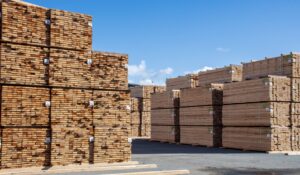 President Trump on Monday ordered significant new tariffs on wood and various wooden products, including imported lumber, timber, kitchen cabinets and upholstered furniture – potentially adding costs to homebuilding and furnishing, which have surged in price in recent months. In a proclamation, Trump said the United States would begin charging a 10% tariff on foreign softwood lumber and timber, used in a wide variety of building materials. He also announced a 25% tariff on kitchen cabinets, vanities and upholstered wooden furniture. Those rates are set to go into effect October 14. On January 1, Trump will boost the tariff on cabinets to 50% and upholstered furniture to 30%. He first announced those new tariffs on Thursday. …“In my judgment, the actions in this proclamation will strengthen supply chains, bolster industrial resilience, create high-quality jobs, and increase domestic capacity utilization for wood products such that the US can fully satisfy domestic consumption while also creating economic benefits through increased exports,” Trump wrote.
President Trump on Monday ordered significant new tariffs on wood and various wooden products, including imported lumber, timber, kitchen cabinets and upholstered furniture – potentially adding costs to homebuilding and furnishing, which have surged in price in recent months. In a proclamation, Trump said the United States would begin charging a 10% tariff on foreign softwood lumber and timber, used in a wide variety of building materials. He also announced a 25% tariff on kitchen cabinets, vanities and upholstered wooden furniture. Those rates are set to go into effect October 14. On January 1, Trump will boost the tariff on cabinets to 50% and upholstered furniture to 30%. He first announced those new tariffs on Thursday. …“In my judgment, the actions in this proclamation will strengthen supply chains, bolster industrial resilience, create high-quality jobs, and increase domestic capacity utilization for wood products such that the US can fully satisfy domestic consumption while also creating economic benefits through increased exports,” Trump wrote. PRINCE ALBERT, Saskatchewan — “It’s taking way too long, and harder than we were hoping, but we have not given up.” That’s the message being delivered by those involved with One Sky Forestry Products‘ OSB mill project planned for Prince Albert. Last week, the Saskatchewan NDP said the mill was the latest in a string of major economic projects delayed or cancelled under a Sask. Party government. …However, a source at the OSB mill project said while they were in somewhat of a holding pattern because of the trade uncertainty with the US, the board of directors had a meeting last week and made the unanimous decision not to cancel or shelve the project, but instead look at ways to move it along. …They added the timing of the project that was supposed to be completed in 2027 and provide 700 jobs, will depend on whether they can tap into financing support sooner rather than later.
PRINCE ALBERT, Saskatchewan — “It’s taking way too long, and harder than we were hoping, but we have not given up.” That’s the message being delivered by those involved with One Sky Forestry Products‘ OSB mill project planned for Prince Albert. Last week, the Saskatchewan NDP said the mill was the latest in a string of major economic projects delayed or cancelled under a Sask. Party government. …However, a source at the OSB mill project said while they were in somewhat of a holding pattern because of the trade uncertainty with the US, the board of directors had a meeting last week and made the unanimous decision not to cancel or shelve the project, but instead look at ways to move it along. …They added the timing of the project that was supposed to be completed in 2027 and provide 700 jobs, will depend on whether they can tap into financing support sooner rather than later.





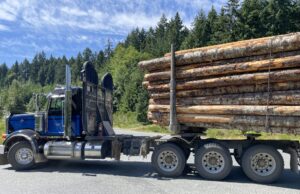 NEW ZEALAND — News that US President Trump imposed a tariff of 10 percent on imported timber has come as a relief to industry, which expected a higher figure. Mark Ross, chief executive of the Wood Processors and Manufacturers Association, said it was a relief as they thought it would be higher. “We’ve been working through the essential impact of a tariff on our products since March this year so it wasn’t a shock because we were, at one point, expecting a 50% tariff. “So 10% is a bit of relief. It is still going to have a financial impact on the wood processing industry in New Zealand. …Ross said they were working with exporters to work out how to handle the extra costs. …Ross said the United States was New Zealand’s third-largest export market and continued to grow.
NEW ZEALAND — News that US President Trump imposed a tariff of 10 percent on imported timber has come as a relief to industry, which expected a higher figure. Mark Ross, chief executive of the Wood Processors and Manufacturers Association, said it was a relief as they thought it would be higher. “We’ve been working through the essential impact of a tariff on our products since March this year so it wasn’t a shock because we were, at one point, expecting a 50% tariff. “So 10% is a bit of relief. It is still going to have a financial impact on the wood processing industry in New Zealand. …Ross said they were working with exporters to work out how to handle the extra costs. …Ross said the United States was New Zealand’s third-largest export market and continued to grow.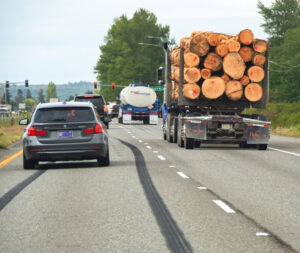 The Trump administration on Monday announced tariffs on imported wood products, targeting softwood lumber, timber, kitchen cabinets, vanities and upholstered furniture. …Trump’s proclamation said wood product imports were weakening the US economy, resulting in a persistent threat to the US supply chains and harming the domestic wood industry. “Because of the state of the United States wood industry, the US may be unable to meet demands for wood products that are crucial to the national defense and critical infrastructure,” the proclamation said. …Critics of the tariffs have voiced concern that the new duties will inflate costs for American consumers and builders. Former US Rep. Matt Cartwright, (D-Pennsylvania), said safety will suffer as a result of the new tariff on imports of trucks. …“A lot of these companies are already on shoestring budgets, and unfortunately the first thing that gets cut when costs go up is safety,” Cartwright said.
The Trump administration on Monday announced tariffs on imported wood products, targeting softwood lumber, timber, kitchen cabinets, vanities and upholstered furniture. …Trump’s proclamation said wood product imports were weakening the US economy, resulting in a persistent threat to the US supply chains and harming the domestic wood industry. “Because of the state of the United States wood industry, the US may be unable to meet demands for wood products that are crucial to the national defense and critical infrastructure,” the proclamation said. …Critics of the tariffs have voiced concern that the new duties will inflate costs for American consumers and builders. Former US Rep. Matt Cartwright, (D-Pennsylvania), said safety will suffer as a result of the new tariff on imports of trucks. …“A lot of these companies are already on shoestring budgets, and unfortunately the first thing that gets cut when costs go up is safety,” Cartwright said.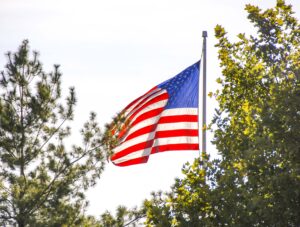 The Commerce Department in a shutdown contingency plan released Monday said it will continue “the necessary work to address the effect of imported articles on national security.” The contingency guidelines mark a subtle shift from the previous plan, which said investigations would continue with unexpired funds if Congress failed to approve additional spending by the end of the fiscal year on Sept. 30. By claiming a national security rationale for the investigations, the administration can continue work on probes being conducted under Section 232 of the Trade Expansion Act. That provision allows for the imposition of tariffs on goods deemed critical to national security. …Section 232 investigations could take on even greater weight if the Supreme Court strikes down Trump’s use of the International Emergency Economic Powers Act. [to access the full story a Bloomberg subscription is required]
The Commerce Department in a shutdown contingency plan released Monday said it will continue “the necessary work to address the effect of imported articles on national security.” The contingency guidelines mark a subtle shift from the previous plan, which said investigations would continue with unexpired funds if Congress failed to approve additional spending by the end of the fiscal year on Sept. 30. By claiming a national security rationale for the investigations, the administration can continue work on probes being conducted under Section 232 of the Trade Expansion Act. That provision allows for the imposition of tariffs on goods deemed critical to national security. …Section 232 investigations could take on even greater weight if the Supreme Court strikes down Trump’s use of the International Emergency Economic Powers Act. [to access the full story a Bloomberg subscription is required]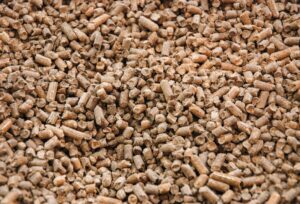 Musser Biomass announces a new sustainability partnership with Trex Company, the world’s largest manufacturer of wood-alternative decking and a pioneer in recycled materials innovation. Musser Biomass operates one of the most advanced low-temperature drying systems in North America, reducing energy use and preserving the integrity of wood fiber. Through partnerships like this one with Trex, Musser Biomass is further extending the life cycle of valuable resources and supporting a circular economy. Through its NextTrex program, Trex Company recycles everyday plastic film materials, keeping them out of landfills and turning them into high-performance composite decking. The updated packaging will begin rolling out nationwide. Musser Biomass produces premium wood pellets and engineered bedding using cutting-edge drying and screening technology.
Musser Biomass announces a new sustainability partnership with Trex Company, the world’s largest manufacturer of wood-alternative decking and a pioneer in recycled materials innovation. Musser Biomass operates one of the most advanced low-temperature drying systems in North America, reducing energy use and preserving the integrity of wood fiber. Through partnerships like this one with Trex, Musser Biomass is further extending the life cycle of valuable resources and supporting a circular economy. Through its NextTrex program, Trex Company recycles everyday plastic film materials, keeping them out of landfills and turning them into high-performance composite decking. The updated packaging will begin rolling out nationwide. Musser Biomass produces premium wood pellets and engineered bedding using cutting-edge drying and screening technology.
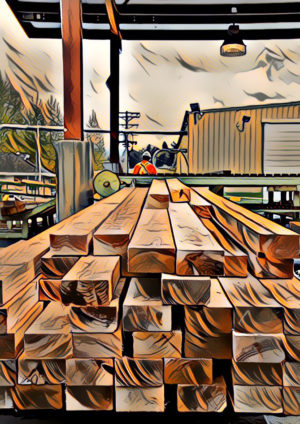 The softwood lumber trade dispute between the US and Canada, which has led to ever-higher US import duties on Canadian lumber, has lasted for decades. …Canadian lumber has the backing NAHB, which sees lumber tariffs as exacerbating high costs for builders and worsening the US housing affordability crisis. There is currently a “Wall of Wood” in the US, after Canadian producers increased shipments to the US in anticipation of the hike to existing ADD and CVD duties in August. Expectations that a large increase in duties would force the closure of Canadian sawmills, lead to shortages, and a boost in lumber prices, overlooked the current weak US demand for lumber, according to Matt Layman. …As US homebuilders now face additional tariff-driven costs, including a 50% tariff on cabinets and vanities, it’s hard to see the lumber demand situation improving, even if more Canadian suppliers have to curtail production or close sawmills.
The softwood lumber trade dispute between the US and Canada, which has led to ever-higher US import duties on Canadian lumber, has lasted for decades. …Canadian lumber has the backing NAHB, which sees lumber tariffs as exacerbating high costs for builders and worsening the US housing affordability crisis. There is currently a “Wall of Wood” in the US, after Canadian producers increased shipments to the US in anticipation of the hike to existing ADD and CVD duties in August. Expectations that a large increase in duties would force the closure of Canadian sawmills, lead to shortages, and a boost in lumber prices, overlooked the current weak US demand for lumber, according to Matt Layman. …As US homebuilders now face additional tariff-driven costs, including a 50% tariff on cabinets and vanities, it’s hard to see the lumber demand situation improving, even if more Canadian suppliers have to curtail production or close sawmills.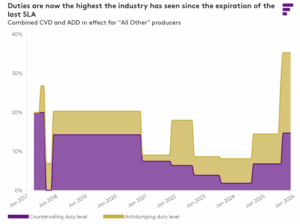 Although we are skeptical how effective the C$500 million in “transition” funding will be, the C$700 million in loan guarantees, which are clearly designed as a short-term lifeline for companies to weather the storm, seem pretty meaningful to the Canadian industry at first glance. …If Canadian producers were to simply absorb the incremental duty rate increase, using today’s FOB price for most Canadian softwood lumber and last year’s export volumes to the US translates to a “just pay it” cost of C$1.6-1.7 billion in additional duty payments over the next 12 months. Canadian mill operators are not in a financial position to simply absorb an additional 21-percentage-point increase in duties, so this is an extreme estimate of the true cost. Mills will curtail output rather than continue producing at heavy losses until prices adjust accordingly. Additionally, there is usually some degree of passthrough from the buyer to the seller.
Although we are skeptical how effective the C$500 million in “transition” funding will be, the C$700 million in loan guarantees, which are clearly designed as a short-term lifeline for companies to weather the storm, seem pretty meaningful to the Canadian industry at first glance. …If Canadian producers were to simply absorb the incremental duty rate increase, using today’s FOB price for most Canadian softwood lumber and last year’s export volumes to the US translates to a “just pay it” cost of C$1.6-1.7 billion in additional duty payments over the next 12 months. Canadian mill operators are not in a financial position to simply absorb an additional 21-percentage-point increase in duties, so this is an extreme estimate of the true cost. Mills will curtail output rather than continue producing at heavy losses until prices adjust accordingly. Additionally, there is usually some degree of passthrough from the buyer to the seller.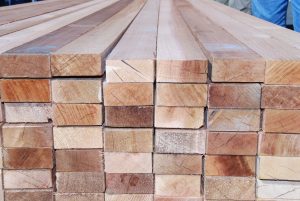 The Trump administration’s latest tariffs on housing materials could raise the average cost of building a single-family home by nearly $9,000, according to a report Tuesday from UBS. Research analyst John Lovallo said the new levies include “an incremental 10% Section 232 tariff on softwood timber and lumber imports, as well as 25% levies on kitchen cabinets, vanities and upholstered wood products.” UBS estimates the lumber tariff will add about $720 per home, while cabinet and vanity tariffs could tack on another $280. Upholstered wood products were not included in the calculation because they are generally purchased by homeowners rather than builders. “As a result, we now estimate the total tariff impact on the cost to construct an average home at approximately $8.9K,” Lovallo wrote. …“Importantly, we continue to believe this cost impact will be spread throughout the entire housing value chain, with the builders perhaps best positioned to push back on suppliers,” he said.
The Trump administration’s latest tariffs on housing materials could raise the average cost of building a single-family home by nearly $9,000, according to a report Tuesday from UBS. Research analyst John Lovallo said the new levies include “an incremental 10% Section 232 tariff on softwood timber and lumber imports, as well as 25% levies on kitchen cabinets, vanities and upholstered wood products.” UBS estimates the lumber tariff will add about $720 per home, while cabinet and vanity tariffs could tack on another $280. Upholstered wood products were not included in the calculation because they are generally purchased by homeowners rather than builders. “As a result, we now estimate the total tariff impact on the cost to construct an average home at approximately $8.9K,” Lovallo wrote. …“Importantly, we continue to believe this cost impact will be spread throughout the entire housing value chain, with the builders perhaps best positioned to push back on suppliers,” he said.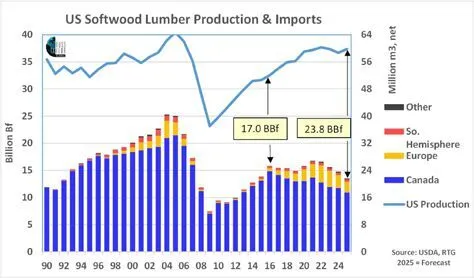
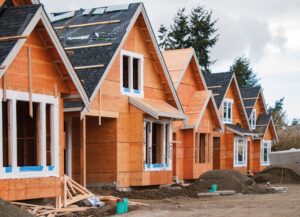 President Trump ordered fresh tariffs on softwood timber, lumber, and wood furnishings, even as housing groups warn the move could drive up construction costs and furniture-industry advocates said the levies would lead to US job losses. The tariffs may, however, prove more legally durable than Trump’s reciprocal country-by-country penalties because they fall under Section 232 of the Trade Expansion Act, the same legal tool the White House has used to justify duties on steel and aluminum. …The measures hit Canada especially hard because the country already faces duties of more than 35%, a result of recent but separate trade initiatives. Publicly traded lumber producers most directly exposed include Canada’s West Fraser Timber, Canfor, and Interfor. In the US, Weyerhaeuser, Boise Cascade, and Louisiana-Pacific are the closest listed peers, with stocks prices that often move in step with lumber tariffs and demand. US-based furniture retailers may also experience pain, with many dependent on foreign wood.
President Trump ordered fresh tariffs on softwood timber, lumber, and wood furnishings, even as housing groups warn the move could drive up construction costs and furniture-industry advocates said the levies would lead to US job losses. The tariffs may, however, prove more legally durable than Trump’s reciprocal country-by-country penalties because they fall under Section 232 of the Trade Expansion Act, the same legal tool the White House has used to justify duties on steel and aluminum. …The measures hit Canada especially hard because the country already faces duties of more than 35%, a result of recent but separate trade initiatives. Publicly traded lumber producers most directly exposed include Canada’s West Fraser Timber, Canfor, and Interfor. In the US, Weyerhaeuser, Boise Cascade, and Louisiana-Pacific are the closest listed peers, with stocks prices that often move in step with lumber tariffs and demand. US-based furniture retailers may also experience pain, with many dependent on foreign wood.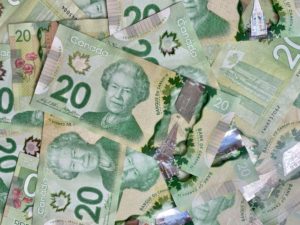 Canada’s GDP managed to grow for the first time in four months in July, even as the economic impacts of American tariffs began settling in, according to Statistics Canada. On Friday, the agency reported that the gross domestic product increased by 0.2% in July compared with the month prior. In addition, Statistics Canada gave a preliminary estimate for August’s reading to show that the economy was “essentially unchanged in the month.” July’s figure was slightly higher than the 0.1% increase most analysts polled were expecting. …“Canada’s economy is tracking very soft growth in Q3. While not a recession, it’s still an economy that’s bumbling along,” said Derek Holt at the Bank of Nova Scotia. “The combined effect leaves us tracking growth of only about 0.7 per cent at a seasonally adjusted and annualized rate in Q3 — that’s hardly much of any rebound from Q2.”
Canada’s GDP managed to grow for the first time in four months in July, even as the economic impacts of American tariffs began settling in, according to Statistics Canada. On Friday, the agency reported that the gross domestic product increased by 0.2% in July compared with the month prior. In addition, Statistics Canada gave a preliminary estimate for August’s reading to show that the economy was “essentially unchanged in the month.” July’s figure was slightly higher than the 0.1% increase most analysts polled were expecting. …“Canada’s economy is tracking very soft growth in Q3. While not a recession, it’s still an economy that’s bumbling along,” said Derek Holt at the Bank of Nova Scotia. “The combined effect leaves us tracking growth of only about 0.7 per cent at a seasonally adjusted and annualized rate in Q3 — that’s hardly much of any rebound from Q2.”


 FINLAND — Scientists are investigating the use of nanocellulose-based porous foam materials in stimuli-responsive smart packaging, water purification, and wireless communications. The doctoral dissertation of Mohammad Karzarjeddi at the University of Oulu, Finland, highlights how cellulose applications can help reduce reliance on fossil-based materials. Stimulus-responsive materials react to external cues, which allows for intelligent and active packaging that adapts to humidity, temperature, light, and pH. Karzarjeddi’s
FINLAND — Scientists are investigating the use of nanocellulose-based porous foam materials in stimuli-responsive smart packaging, water purification, and wireless communications. The doctoral dissertation of Mohammad Karzarjeddi at the University of Oulu, Finland, highlights how cellulose applications can help reduce reliance on fossil-based materials. Stimulus-responsive materials react to external cues, which allows for intelligent and active packaging that adapts to humidity, temperature, light, and pH. Karzarjeddi’s 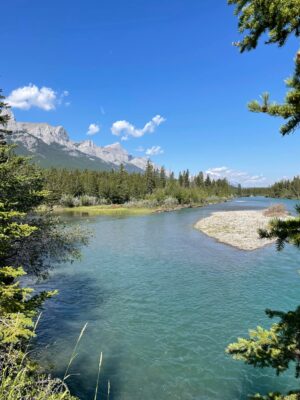 Do you remember the hydrological cycle that you learned about in school? Rain and snow fall from the sky. Tree leaves and branches slow the fall of rain. In the spring, snow slowly melts, the melt slowed because trees shade the snow and cool the air. Some of the rain and melted snow infiltrate deep into the ground, aided by the presence of tree roots, to become part of the ground water that flows downhill, slowed by tree roots. …Transpiration from tree leaves, and evaporation from the land, lakes and ocean return the water to the sky and the cycle starts over again. But wait. Remove a major part of the trees from the cycle and what happens? Rain and snow land directly on the ground. Less rain infiltrates the soil and, with no tree roots, what ground water there is flows downhill more quickly.
Do you remember the hydrological cycle that you learned about in school? Rain and snow fall from the sky. Tree leaves and branches slow the fall of rain. In the spring, snow slowly melts, the melt slowed because trees shade the snow and cool the air. Some of the rain and melted snow infiltrate deep into the ground, aided by the presence of tree roots, to become part of the ground water that flows downhill, slowed by tree roots. …Transpiration from tree leaves, and evaporation from the land, lakes and ocean return the water to the sky and the cycle starts over again. But wait. Remove a major part of the trees from the cycle and what happens? Rain and snow land directly on the ground. Less rain infiltrates the soil and, with no tree roots, what ground water there is flows downhill more quickly.

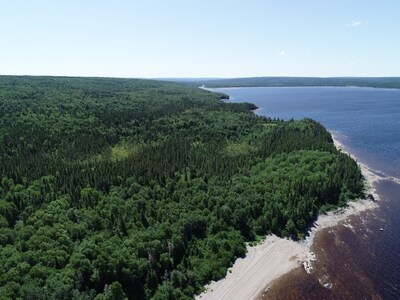
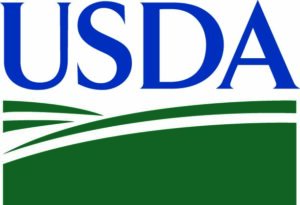 The Trump administration is planning to close some US Forest Service offices in Alaska under a national reorganization announced this summer. Public comment on the reorganization is open through Tuesday. …A spokesperson for the USDA said “We recognize this may be difficult, but we are hopeful that affected employees will remain with us through this transition.” In July, US Agriculture Secretary Brooke Rollins said she intends to close the Forest Service’s nine national regional offices “over the next year” but “will maintain a reduced state office in Juneau, Alaska, and an eastern service center in Athens, Georgia.” Research stations, like the Juneau Forestry Science Laboratory in Auke Bay, will be closed and “consolidated into a single location in Fort Collins, Colorado.” Nationally, Rollins said she intends to scatter more than half of the Agriculture Department’s 4,600 Washington, D.C.-based administrators to five regional hubs; one each in Utah, Colorado, North Carolina, Missouri and Indiana.
The Trump administration is planning to close some US Forest Service offices in Alaska under a national reorganization announced this summer. Public comment on the reorganization is open through Tuesday. …A spokesperson for the USDA said “We recognize this may be difficult, but we are hopeful that affected employees will remain with us through this transition.” In July, US Agriculture Secretary Brooke Rollins said she intends to close the Forest Service’s nine national regional offices “over the next year” but “will maintain a reduced state office in Juneau, Alaska, and an eastern service center in Athens, Georgia.” Research stations, like the Juneau Forestry Science Laboratory in Auke Bay, will be closed and “consolidated into a single location in Fort Collins, Colorado.” Nationally, Rollins said she intends to scatter more than half of the Agriculture Department’s 4,600 Washington, D.C.-based administrators to five regional hubs; one each in Utah, Colorado, North Carolina, Missouri and Indiana.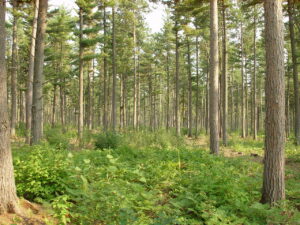 WASHINGTON — Tribal lands in the Pacific Northwest are earning national recognition for something the US Forest Service has struggled to achieve: healthy, resilient forests. …Their success is rooted in thousands of years of stewardship and a willingness to act where federal policy too often stalls. Long before European colonization, Indigenous people actively managed forests through cultural burning and selective thinning. “In my neck of the woods, there was a five to 15 year fire return interval that was clearly from tribal management,” said Cody Desautel, of the Confederated Tribes of the Colville Reservation, which extends across Washington and into British Columbia, Oregon, and Idaho. …“When you’re not managing these forest types like they were previously managed, Mother Nature is going to have a course correction and reset the clock,” said Steve Rigdon, tribal partnership stewardship and resource manager at Sustainable Northwest. That course correction has arrived.
WASHINGTON — Tribal lands in the Pacific Northwest are earning national recognition for something the US Forest Service has struggled to achieve: healthy, resilient forests. …Their success is rooted in thousands of years of stewardship and a willingness to act where federal policy too often stalls. Long before European colonization, Indigenous people actively managed forests through cultural burning and selective thinning. “In my neck of the woods, there was a five to 15 year fire return interval that was clearly from tribal management,” said Cody Desautel, of the Confederated Tribes of the Colville Reservation, which extends across Washington and into British Columbia, Oregon, and Idaho. …“When you’re not managing these forest types like they were previously managed, Mother Nature is going to have a course correction and reset the clock,” said Steve Rigdon, tribal partnership stewardship and resource manager at Sustainable Northwest. That course correction has arrived.
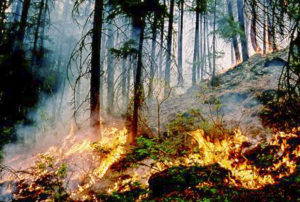 SPAIN — This summer has been marked by particularly severe forest fires in the northwestern region of Galicia, and locals have called for the revival of a once-common practice of burning undergrowth in the winter, Reuters reports. Hotter, drier summers mean more widespread and destructive forest fires, and locals and experts have called for controlled burning and other forest management methods to prevent such large-scale fires. In southern Galicia, the summer of 2025 brought the worst forest fires in 30 years. …Just a few weeks ago, the flames destroyed 190 square kilometers around the village where Perez lives. …Forestry experts and political leaders have said that a lack of investment in forest management and fire prevention over the past two decades has made the situation so dire. Victor Resco, at Leiden University, said that a new approach was needed across Europe at a time when fires are increasingly occurring closer to populated areas.
SPAIN — This summer has been marked by particularly severe forest fires in the northwestern region of Galicia, and locals have called for the revival of a once-common practice of burning undergrowth in the winter, Reuters reports. Hotter, drier summers mean more widespread and destructive forest fires, and locals and experts have called for controlled burning and other forest management methods to prevent such large-scale fires. In southern Galicia, the summer of 2025 brought the worst forest fires in 30 years. …Just a few weeks ago, the flames destroyed 190 square kilometers around the village where Perez lives. …Forestry experts and political leaders have said that a lack of investment in forest management and fire prevention over the past two decades has made the situation so dire. Victor Resco, at Leiden University, said that a new approach was needed across Europe at a time when fires are increasingly occurring closer to populated areas.
